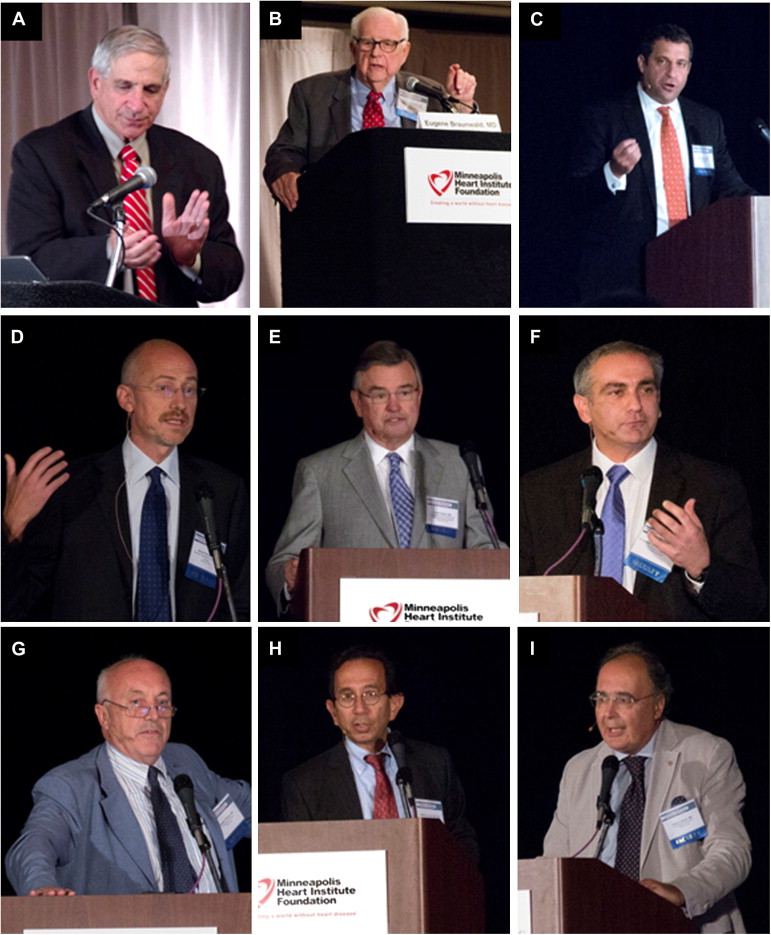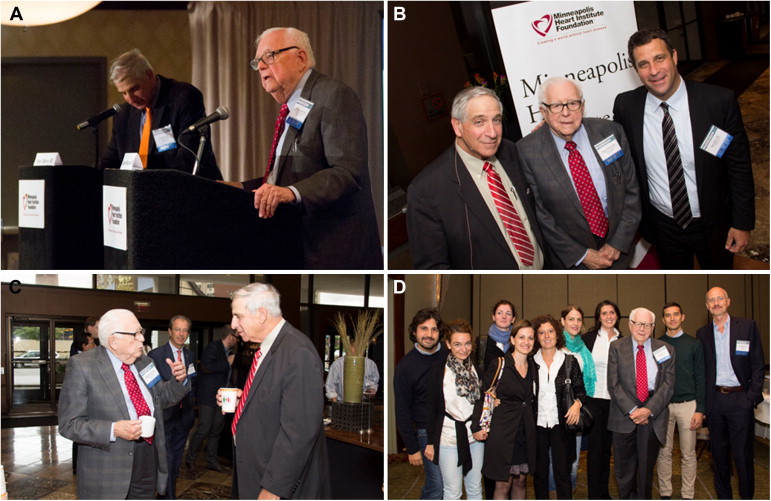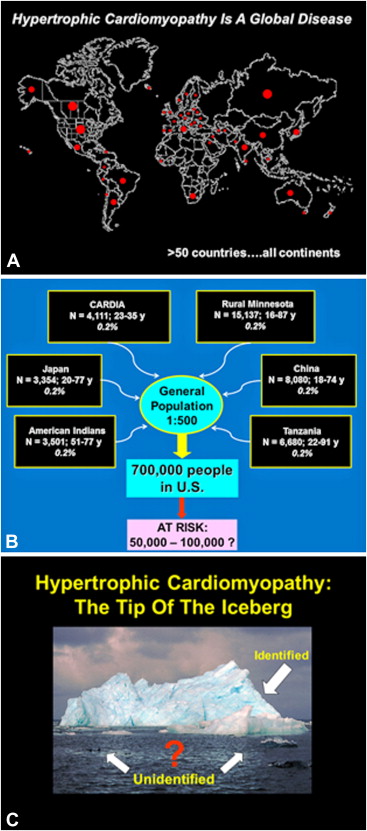From September 27 to 29, 2013, the Fifth International Summit on Hypertrophic Cardiomyopathy was held in Minneapolis, Minnesota, sponsored by the Minneapolis Heart Institute Foundation, with the relevant title, “ Hypertrophic Cardiomyopathy: A Contemporary and Treatable Disease .” The theme of the conference was intentionally selected to recognize the maturation of this complex disease within the cardiovascular community, particularly the evolution of diagnostic and management strategies. An international faculty of 31 was assembled representing the most experienced, respected, and dedicated experts in hypertrophic cardiomyopathy (HCM), all of whom have played major roles in defining this disease. The faculty presented and discussed the emerging principles of HCM for 250 attendees from 17 countries and 27 states over 2.5 days ( Table 1 ; Figures 1 to 3 ).
| Director: Barry J. Maron, MD |
| Coordinator: Hayley Matthews-Jones |
| Summit faculty | Location |
|---|---|
| Barry J. Maron, MD | Minneapolis, Minnesota |
| Eugene Braunwald, MD | Boston, Massachusetts |
| Martin S. Maron, MD | Boston, Massachusetts |
| Berglind Adalsteinsdottir, MD | Akureyri, Iceland |
| Michael J. Ackerman, MD, PhD | Rochester, Minnesota |
| Cristina Basso, MD | Padua, Italy |
| Franco Cecchi, MD | Florence, Italy |
| Joseph A. Dearani, MD | Rochester, Minnesota |
| Robert J. Desnick, MD, PhD | New York, New York |
| N.A. Mark Estes, III, MD | Boston, Massachusetts |
| David Feldman, MD, PhD | Minneapolis, Minnesota |
| Philip R. Fox, DVM | New York, New York |
| Gunnar Thor Gunnarsson, MD, PhD | Akureyri, Iceland |
| Robert G. Hauser, MD | Minneapolis, Minnesota |
| Carolyn Y. Ho, MD | Boston, Massachusetts |
| Carey D. Kimmelstiel, MD | Boston, Massachusetts |
| Harry Lever, MD | Cleveland, Ohio |
| Mark S. Link, MD | Boston, Massachusetts |
| Iacopo Olivotto, MD | Florence, Italy |
| Steve R. Ommen, MD | Rochester, Minnesota |
| Antonio Pelliccia, MD | Rome, Italy |
| Lisa Salberg | Rockaway, New Jersey |
| Christine E. Seidman, MD | Boston, Massachusetts |
| Christopher Semsarian, MD, PhD | Sydney, Australia |
| Mark V. Sherrid, MD | New York, New York |
| Paolo Spirito, MD | Genoa, Italy |
| Folkert J. ten Cate, MD, PhD | Rotterdam, the Netherlands |
| Gaetano Thiene, MD | Padua, Italy |
| Jeffrey A. Towbin, MD | Cincinnati, Ohio |
| Sami Viskin, MD | Tel Aviv, Israel |
| Anna Woo, MD | Toronto, Ontario, Canada |
| Notable guests | |
| Sue Casey, RN | Minneapolis, Minnesota |
| Jackie Dosmann | Minneapolis, Minnesota |
| Tammy Haas, RN | Minneapolis, Minnesota |
| Vicki Pink, RN | Minneapolis, Minnesota |
| Joseph Murgo, MD | San Antonio, Texas |
| Charles McIntosh, MD, PhD | Washington, DC |
| Jodie Ingles, PhD | Sydney, Australia |
| Donna Maron, MSW | Minneapolis, Minnesota |



The priority was education and achieving an understanding of HCM necessary to benefit the patient population, while at the same time avoiding unnecessary controversy for a disease too often fraught with misunderstanding and confusion. The Summit was the place to hear the whole “hypertrophic cardiomyopathy story” in an intense but interactive format.
Furthermore, it was very appropriate for Dr. Eugene Braunwald to be present at the Summit and to lecture and interact ( Figure 2 ), for he, more than any other investigator, is responsible for the initial seminal description of HCM in the 1960s at the National Institutes of Health (Bethesda, Maryland).
This editorial serves as a primer for underscoring the many important advances in HCM and its changing epidemiology and clinical profile, particularly in the years since the last Summit in 2009. It was also notable and quite sad to recognize the passing of Dr. Douglas Wigle at age 85 years after a long illness. Dr. Wigle was a pioneer, scholar, and innovator in HCM, as well as a true gentleman.
Background
HCM is a global disease known to affect patients in well over 50 countries but very similar in presentation throughout the world, and likely the most common genetic heart disease. Several diverse population studies report a frequency in the general population of about 1:500 ( Figure 4 ; Table 2 ). Because these data are based on probands presenting with phenotypically expressed disease (i.e., left ventricular hypertrophy), the overall population burden of HCM is probably substantially underestimated, given the large numbers of clinically unrecognized patients and family members who are genetically affected without overt evidence of the disease.





